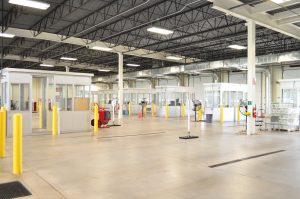
Design-build is a rapidly growing project delivery system that differs from the typical design-bid-build concept in a number of ways. While the model has been around for quite a while, it has just recently picked up steam. The Design Build Institute of America reports that the design-build system has grown about 40 percent over the past 15 years.
In short, design-build project delivery is a concept in which one team performs both design and construction. Contractors, architects, engineers, and owners all work together. This type of streamlined collaboration is the central concept behind design-build and there are a number of advantages to it.
First, there is singular responsibility under one contract, cutting back on communication channels and giving the owner more control. Teamwork is fostered in this type of environment, providing additional value to the project. The more parties that are involved under different contracts, then differing views, conflicting ideas, and lack of communication can hold a job back.
Second, pricing and scheduling for a project is much more accurate in the early stages. When design and construction are planned out together, it’s easy to visualize the job and predict costs and a timeline. The owner will be able to make changes to the scope, request different materials, or discuss value engineering early on in the process.

Third, design-build cuts back on costs. Because of the accurate pricing in the early stages and the early input from the owner, costly changes that may usually take place further down the road can be avoided. Expensive mistakes and oversights can also be prevented.
Fourth, the design and construction processes can overlap, which cuts back on time needed to complete the job. Extra time isn’t needed for design, redesign, bidding, etc. Duration of a project diminishes drastically.
Fifth, most design-build projects are of higher quality than others. All members of the design team collaborate and produce a set of drawings. Everyone is given the same documents to avoid confusion between design and construction. This can lead to effective value-engineering that enhances the project and cuts back on costs.
The Construction Industry Institute and Pennsylvania State University studied actual design-build projects and processes and determined that design-build is more economical and efficient than the design-bid-build delivery system. It costs about 6% less, projects are constructed about 12% faster, and the project is delivered about 33% faster.





